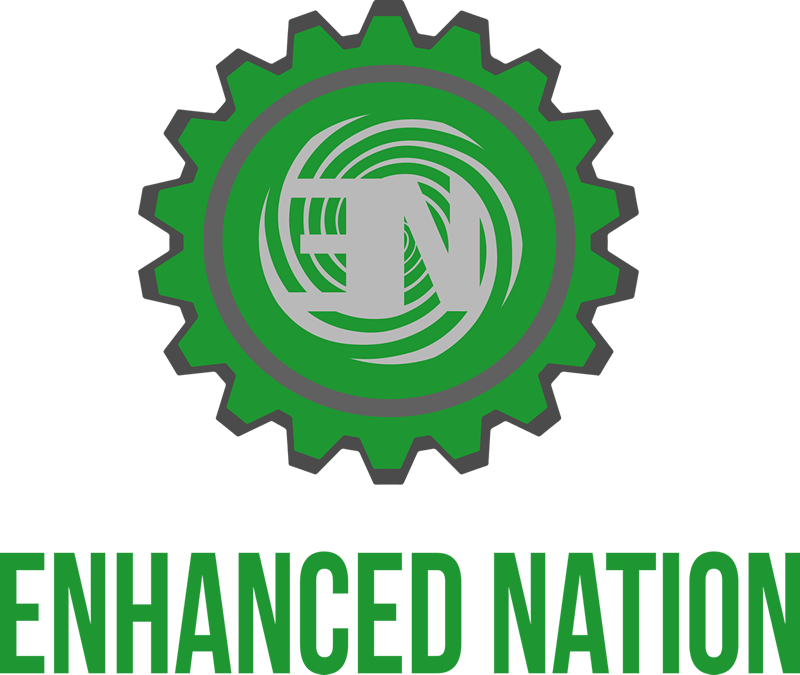neurostim extracts reviews
Some of the vital ingredients in this formulation are:
We, Health Web Magazine, the owner of this e-commerce website, fully intends to comply with the rules of the Federal Trade Commission (FTC) regarding the use of endorsements, testimonials, and general advertising and marketing content. As a visitor to Health Web Magazine you should be aware that we may receive a fee for any products or services sold through this site.
Content
This content may contain all or some of the following – product information, overviews, product specifications, and buying guides. All content is presented as a nominative product overview and registered trademarks, trademarks, and service-marks that appear on Health Web Magazine belong solely to their respective owners. If you see any content that you deem to be factually inaccurate, we ask that you contact us so we can remedy the situation. By doing so, we can continue to provide information that our readers can rely on for truth and accuracy.
Our Top Selections Box – Promotional Sales
Products shown in the section titled ‘Our Top Products’ are those that we promote as the owner and/ or reseller and does not represent all products currently on the market or companies manufacturing such products. In order to comply fully with FTC guidelines, we would like to make it clear that any and all links featured in this section are sales links; whenever a purchase is made via one of these links we will receive compensation. Health Web Magazine is an independently owned website and all opinions expressed on the site are our own or those of our contributors. Regardless of product sponsor relations, all editorial content found on our site is written and presented without bias or prejudice.
Something we believe is that every page on the website should be created for a purpose. Our Quality Page Score is therefore a measurement of how well a page achieves that purpose. A page’s quality score is not an absolute score however, but rather a score relative to other pages on the website that have a similar purpose. It has nothing to do with any product ratings or rankings. It’s our internal auditing tool to measure the quality of the on the page content. There are a number of factors that determine the Page Score of a given page. Landing page quality is a factor in determining Page Score. Landing page quality generally refers to whether or not the overall page contains relevant and original content to the web page visitor. The content quality value of a web page is determined by comparing a page to known quality patterns and each pattern carries a different weighting in how it affects the overall content quality value of a page. We also factor in user generated feedback on this form plus a page quality algorithm. Since web pages content can change, the content quality value of a web page is updated periodically.
Rhodiola Extract 350 mg
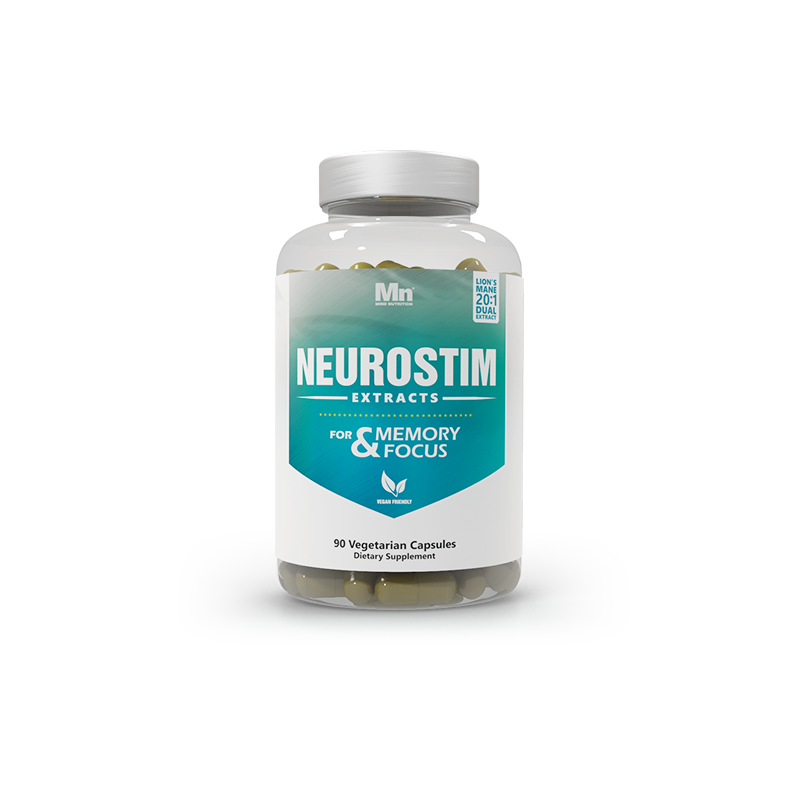
Neurostim™has been designed to be the overall cognitive boosting nootropic formula, aimed at strengthening the connections and speed of neuronal communication, improving working memory and promoting brain efficiency at a neurotransmitter level.
Share this:
- Description
- Additional information
- Reviews (0)
Neurostim Extracts Overview
Cognitive performance with unparalleled results.
Neurostim Extracts boasts 5 powerful nootropics and adaptogens, carefully selected to help boost productivity by sharpening your mind to keep you focused and immersed in your mentally demanding activities.
Neurostim Extracts combines natural extracts to tackle stress-induced fatigue, cognition, motivation, concentration, and neuronal regeneration through multiple brain pathways. Each ingredient plays a synergistic role in creating a complete formula to unleash your cognitive potential.
Key Benefits
Memory, learning and recall
Optimal Cognition
Neural Regeneration
Motivation and Focus
Wellbeing and mood
Fatigue and Stress Support
Suggested Use:
As a dietary supplement, take 2-3 capsules, once or twice per day, ideally together with a meal. Results improve with continuous use. Do not exceed six (6) capsules in any 24 hour period unless otherwise directed by a healthcare professional.
Lion’s Mane Mushroom 1,000 mg
20:1 Dual-Extract – Certified Organic – 25% Beta Glucans
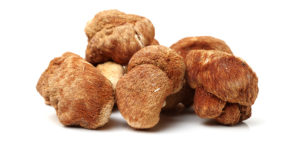
Hericium Erinaceus
This promising nootropic mushroom extract has shown to offer neuroprotective benefits by stimulating synthesis of Nerve Growth Factor or NGF, which deals with the growth and repair of neurons.
The nootropic compounds of interest found in Lion’s Mane are known as Erinacines and Hericenones. Erinacines are primarily found in the mycelium, whereas the Hericenones are primarily found in the fruiting bodies.
These compounds support neuroplasticity by optimizing NGF. But most of all, the Erinacines found in Lion’s Mane are among the most potent naturally occurring compounds for inducing NGF production.
Cognitive Benefits
Supports Neurogenesis
Supports Cognition
Supports Inflammation
Supports the immune system
Panax Ginseng 200 mg
Root Extract – 20% Ginsenosides

Korean Panax Ginseng
Also known as True Ginseng, Panax this is the most researched form of all the Ginseng plants. It has been shown through studies to be effective for support aspects of mood and cognition.
Panax Ginseng contains a variety of Ginsenosides which give it its unique properties. Ginsenosides have also shown to have antioxidant properties.
At 20%, our extract contains an average of 4x more Ginsenosides than typically found in Ginseng containing products (2-10%).
Cognitive Benefits
Positive effects on fatigue-reduced cognition
Supports the effects of Cognitive Decline
Supports wellbeing
Antioxidant properties
Bacopa Monnieri 300 mg
Over 50% Bacosides, whole plant extract
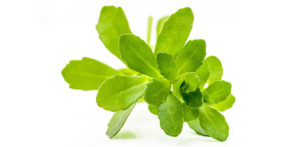
Bacopa Monnieri
One of the most renowned nootropic extracts backed by a large amount of supporting research, Bacopa has been used for cognitive enhancement for many years.
Bacopa has shown to indirectly affect cognition by targetting the effects of anxiety. There have also been studies that suggest it may contribute positively to the formation of memories. When combined with the right ingredients, this natural herb is the ideal nootropic synergist for a powerful nootropic stack.
Cognitive Benefits
Support cognitive function
Serves as an adaptogen
Plays a role in nerve growth
Rhodiola Extract 350 mg
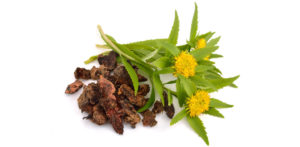
Rhodiola Rosea
Rhodiola is an adaptogen that has historically been used to support the symptoms of fatigue during stressful periods.
Cognitive Benefits
Said to target the effects of fatigue
May impact stress responses
Huperzine A 50 mcg
From Huperzia Serrata

Huperzine A
Acetylcholine (ACh) is a crucial neurotransmitter in the brain associated with learning.
Huperzine inhibits the enzyme responsible for breaking down acetylcholine (ACh), thereby increasing ACh levels in the brain.
Cognitive Benefits
Warning: Do not use if pregnant or breast feeding, elderly, under the age of 18 or if safety seal is broken. Always consult with a medical practitioner prior to use of this or any dietary supplement. Discontinue immediately if any adverse effects occur and contact your health care practitioner. KEEP OUT OF REACH OF CHILDREN.
The first I heard about BrainGear was in an email from BrainGear. “BrainGear is a mind wellness drink,” a BrainGear spokesperson explained. “Our drink contains 13 nutrients that help lift brain fog, improve clarity, and balance mood without giving you the jitters (no caffeine). It’s like a green juice for your neurons!” This company is based in San Francisco.
I used to be able to memorize the order of a deck of cards. This was when I worked at the mall food court. I learned because a mean older boy on whom I had a big, destructive crush bought me a copy of Joshua Foer’s pop-science memoir Moonwalking With Einstein, which is about memorizing stuff.
In the world of memory competitions, the athletes train their minds with daily practice. The primary tactic they employ is the building of mental “memory palaces” — turning pieces of information into objects and placing them in sequence around a physical space that can be walked through in the mind. So, to memorize a deck of cards, I would assign each card in a traditional deck to someone important in my life. The jack of spades is my uncle Ken. The ace of clubs is my sister Sophie, and so on. I’d flip over three cards at a time, and those three people would be placed together somewhere in my parents’ house, starting with the garage. Once the house was full of 52 oddly-grouped guest stars in my life, I’d go back and convert them into the correct order of the cards in the deck, recite it aloud, and everyone would be impressed. Kind of.
(Actual competitive memorizers can do dozens of decks of cards, not just one. And they can do it very fast.)
Ever wonder how your mind works? Watch The Mind, Explained, our 5-part miniseries on the workings of the brain. Available to stream now on Netflix.
Training my memory was a fun way to get rid of excess mental energy, itchy and bored as I was during this summer in suburbia, tortured as I was by this doomed crush. I wanted to impress a genius. I did not yet own a smartphone! I needed a better brain and I had the downtime to pursue it. What better way to do this than to work at it? What better end to put my energies than flexing a muscle over and over?
Now, I have less of that downtime, less of a specific understanding of what it would even mean for my brain to be better, and a lot more sympathy for the people trying to buy their way to clarity and memory and focus and control. I also have more expendable income.
My brain today is so far gone — spinning out on the usual circular thoughts of sex, death, and Twitter, fuzzy and foggy from staring at two computer screens all day — I assume it needs an intervention only the consumer marketplace can provide. So that’s how I ended up accepting an invitation to try a drinkable product called BrainGear, which promises “a clearer brain today” and “a stronger brain tomorrow,” and realizing that I am far from alone.
On January 1, 1990, President George H.W. Bush announced the start of “the decade of the brain.” What he meant was that the federal government would lend significant financial support to neuroscience and mental health research, which it did. What he probably did not anticipate was ushering in an era of mass brain fascination, bordering on obsession. And that 30 years later, we’d be trying to put genius in a bottle and then swallow it.
Arguably the first major consumer product of this era was Nintendo’s Brain Age game, based on Ryuta Kawashima’s Train Your Brain: 60 Days to a Better Brain, which sold over a million copies in Japan in the early 2000s. The game — which was a series of puzzles and logic tests used to assess a “brain age,” with the best possible score being 20 — was massively popular in the United States, selling 120,000 copies in its first three weeks of availability in 2006. (It was advertised with the slogan “Getting the most out of your prefrontal cortex.”) Lumosity, which offered a suite of memory, attention, and problem-solving browser games, launched in 2007. (Reuters called brain fitness the “hot industry of the future” in 2008.) The site had 70 million registered members at its peak, before it was sued by the Federal Trade Commission to pay out $2 million in redress to customers bamboozled by false advertising. (“Lumosity preyed on consumers’ fears about age-related cognitive decline.”)
BrainGear promises brain-function results after four or five days. BrainGear
In 2012, Felix Hasler, a senior postdoctoral fellow at the Berlin School of Mind and Brain at Humboldt University, reflected on the rise in brain research and brain-training consumer products, writing a spicy pamphlet called “Neuromythology: A Treatise Against the Interpretational Power of Brain Research.” In it, he chastised scientists for affixing “neuro” to dozens of fields of study in an effort to make them sound both sexier and more serious, as well as legitimate neuroscientists for contributing to “neuro-euphoria” by overstating the import of their own studies.
Most of all, he criticized the media. “Hardly a week goes by without the media releasing a sensational report about the relevance of neuroscience results for not only medicine, but for our life in the most general sense,” Hasler wrote. And this fervor, he argued, had given rise to popular belief in the importance of “a kind of cerebral ‘self-discipline,’ aimed at maximizing brain performance.” To illustrate how ludicrous he found it, he described people buying into brain fitness programs that help them do “neurobics in virtual brain gyms” and “swallow ‘neuroceuticals’ for the perfect brain.”
Unfortunately, he was too late, and also unfortunately, Bradley Cooper is partly to blame for the boom of the edible brain-improvement industry.
In 2011, he starred in Limitless, a movie about a man who takes a special pill and becomes smarter and more capable than anyone else on Earth. I’m joking about the cultural significance of this movie, but I’m also not. It was a wild card and an unexpected hit, and it mainstreamed an idea that had already been taking hold among Silicon Valley biohackers and human optimization zealots. (TechCrunch called the prescription-only narcolepsy medication Modafinil “the entrepreneur’s drug of choice” in 2008.)
The same year that Limitless hit theaters, the up-and-coming Pennsylvania-based pharmaceutical company Cephalon was acquired by Israeli giant Teva Pharmaceutical Industries for $6 billion. Cephalon had very few interesting assets at the time. In fact, there were only two that made it worth the price: Modafinil (which it sold under the brand name Provigil and marketed as a cure for drowsiness and brain fog to the professionally sleep-deprived, including long-haul truckers and fighter pilots), and Nuvigil, a similar drug it developed in 2007 (called “Waklert” in India, known for absurd side effects like psychosis and heart failure).
In 2011, just over 650,000 people in the US had Modafinil prescriptions. By 2012, that number had risen to 1.9 million. At the same time, herbal supplements were on a steady upward climb toward their pinnacle today as a $49 billion-a-year industry. And at the same time, half of Silicon Valley was just waiting for a moment to take their human optimization philosophies mainstream.
Bradley Cooper in Limitless, after he becomes limitless. Rogue Pictures
“I Spent a Week on Nuvigil, the Drug From Limitless,” a Vice editor wrote in the summer of 2014. The following year, a different Vice writer spent a week on Modafinil. About a month later, there was a huge spike in search traffic for “real Limitless pill,” as nightly news shows and more traditional outlets started writing up trend pieces about college kids, programmers, and young bankers taking “smart drugs” to stay focused and productive.
It helped too that, as vague as the term “smart” is, “nootropics” is equally broad. It was coined by Romanian scientist Corneliu E. Giurgea in 1972 when he created a drug he believed enhanced memory and learning. (Silicon Valley types often cite his tagline: “Man will not wait passively for millions of years before evolution offers him a better brain.”) But today it’s an umbrella term that includes everything from prescription drugs, to dietary supplements on sliding scales of safety and effectiveness, to commonplace stimulants like caffeine — anything a person might use in an effort to enhance cognitive function, whatever that might mean to them. Obviously, not everyone wants to take a risky sleep medication.
For those people, there’s Whole Foods bottles of Omega-3 and B vitamins. In 2013, the American Psychological Association estimated that grocery store “brain booster” supplements and other cognitive enhancement products were already a $1 billion-a-year industry. In 2014, analysts projected “brain fitness” becoming an $8 billion industry by 2015. And of course, supplements — unlike medications that require prescriptions — are barely regulated, making them a nearly limitless market.
“Is the Limitless pill real?” bloggers asked, before providing lists of the “best nootropics to sharpen your mental activity.”
The first I heard about BrainGear was in an email from BrainGear. “BrainGear is a mind wellness drink,” a BrainGear spokesperson explained. “Our drink contains 13 nutrients that help lift brain fog, improve clarity, and balance mood without giving you the jitters (no caffeine). It’s like a green juice for your neurons!” This company is based in San Francisco.
BrainGear offered to send me a week’s worth of BrainGear — two three-packs, each retailing for $9.99 — as a sample, to “nourish” my mind, and I agreed. What did I have to lose?
The BrainGear label said to drink an entire bottle every day, first thing in the morning, on an empty stomach, and also that it “tastes best cold,” which we all know is code for “tastes awful no matter what.”
In rare cases, the device can malfunction, causing pain or a sudden jolting sensation.
Spinal Cord Stimulator Removal Recovery
Recovery from spinal cord stimulator removal is fairly quick. Most patients spend one night in the hospital for monitoring and return home the next day.
Surgical pain subsides faster in patients who have had percutaneous leads removed (after about a day) than in patients who had paddle leads taken out (around a week).
“For the most part, I let patients play it by ear. They can return to work and physical activity as soon as they’re feeling better but will need to avoid lifting anything over 20 pounds for about three weeks,” says Anderson.
The shipment has been quite long but it finally arrived, but I can understand it since I live in Italy. The package was closed. Recommended.
Product does what it says it will.
Talking about products with inside only single component. I tested differents pills of the same product and sometimes the taste has been different, so I think that quality is not pure pure.
Reply from Mind Nutrition UK
Thanks for your feedback. From your order, Sulbutiamine contains virtually no fillers so the contents is pure. Citicoline contains cellulose as the filler, which is completely benign in taste, while Citicoline itself is slightly salty-bitter/sweet.
The dosage is consistent across capsules as they are all filled with the same batches, taste is in no way an indicator of purity, however, if you have any concerns feel free to email us for certificates of analysis.
During longer exercise sessions, the body produces much more ATP, but in a much slower process. Duri. read more
Mammoth Neuro Stim Detailed Report
The detailed report provides an in-depth analysis of the product’s rating. In addition to showing ratings for each area, this report also provides the required criteria for a thumbs-up in each section.
Effectiveness Rating
Mammoth Neuro Stim earned a thumbs-up in this category because its effectiveness rating is 1.80. A product’s effectiveness rating must be at least 1.5 to receive a thumbs-up in this area. This effectiveness rating means Mammoth Neuro Stim is made up of a mix of both high and low-quality ingredients and may lead to some positive results.
This category illustrates how well a product works based on what the research says about its ingredients. Researchers conduct studies on supplement ingredients to gauge effectiveness. The database grades products on how effective their ingredients are. The effectiveness rating of supplement products is evaluated on a 3 point scale: 3.0 is the most effective, 1.0 is the least effective.
Ingredients
Mammoth Neuro Stim earned a thumbs-down in this category because it contains 0% extremely and/or moderately effective ingredients. A product must contain at least 75% extremely and/or moderately effective ingredients to receive a thumbs-up in this area.
This category rates a product’s ingredient makeup. A product should contain mostly extremely and/or moderately effective ingredients with little or no ineffective ones. The database categorizes ingredients as extremely, moderately, or ineffective based on conclusions from research articles.
Mammoth Neuro Stim contains:
- unrated ingredients: 2 (the database does not contain information on these ingredients)
- total ingredients: 10
The following table lists all ingredients found in this product as well as their effectiveness ratings and amounts (if listed).
| Ingredient | Effectiveness Rating |
|---|---|
| Huperzine A 100mcg | 2.7 out of 3 |
| Caffeine 200mg | 2 out of 3 |
| L-Theanine 100mg | 2 out of 3 |
| Glutamine 1g | 1.9 out of 3 |
| Theacrine 63mg | 1.8 out of 3 |
| Black Pepper Fruit Extract (Piperine) 5mg | 1.4 out of 3 |
| Choline Bitartrate 500mg | 1.3 out of 3 |
| Tyrosine 300mg | 1.3 out of 3 |
| Lions Mane Mushroom* | not rated |
| DMAE* | not rated |
| Product Effectiveness Rating | 1.80 |
* These ingredients are not included in the Supplement Database.
Note: These ingredients are accurate as of October 11, 2020.
Ingredient Articles
Is glutamine effective in improving performance or enhancing recovery?
Plenty of studies have confirmed the positive effects of creatine supplementation. One meta analysis. read more
What is Glutamine?
Glutamine is one of the conditionally essential amino acids. Under normal circumstances, the body ma. read more
Which preworkout supplement ingredients work best?
There is a good reason caffeine and beta-alanine are the two most popular ingredients found in prewo. read more
Does caffeine increase strength?
During longer exercise sessions, the body produces much more ATP, but in a much slower process. Duri. read more
What is Caffeine?
Caffeine is a substance found naturally in many plants. It’s also abundant in coffee, tea, soda, a. read more
Ingredient Dosing
Mammoth Neuro Stim earned a thumbs-down in this category because 50% of its ingredients are dosed within the effective range. Seventy-five (75)% of product’s ingredients must be dosed within the effective range to receive a thumbs-up in this area.
This category compares a product’s ingredient dosing to effective doses found in research articles and doses used in other products. When researchers study the efficacy of supplement ingredients, they use specific doses. Manufacturers should create products with ingredient doses that fall within established effective ranges.
Mammoth Neuro Stim Dosing Compared to Research
This section is a comparison of ingredient doses found in Mammoth Neuro Stim to amounts used in research articles. The first column contains the name of the ingredient as well as the amount. The second column contains the range of effective doses for that ingredient. Note: not all ingredients in the database contain dosing information; only ingredients with scientific dosing information are included in this analysis.
A green checkmark is shown if the ingredient amount falls within the effective range.
A down arrow is shown if an ingredient amount is lower than the effective range.
| Ingredient & Amount | Effective Range |
|---|---|
| Huperzine A 100mcg | 100mcg – 200mcg |
| Black Pepper Fruit Extract (Piperine) 5mg | 60mg |
Mammoth Neuro Stim Dosing Compared to Other Products
This section is a comparison of ingredient doses found in Mammoth Neuro Stim to amounts used in other products. The first column displays the ingredient and amount. The second column displays the average amount of the ingredient found across all products in the database. The final column displays the range found across all products in the database.
An orange up or down arrow is shown if the ingredient amount is higher or lower than the average.
An equal sign is shown if the ingredient amount is equal to the average.
| Ingredient & Amount | Average | Range |
|---|---|---|
| Glutamine 1g | 2.16g | 0.01g – 10g |
| Choline Bitartrate 0.5g | 0.46g | 0g – 2.5g |
| Tyrosine 0.3g | 0.7g | 0g – 5.5g |
| Caffeine 200mg | 237.67mg | 0.28mg – 700mg |
| Lions Mane Mushroom 0.15g | 0.42g | 0g – 1.5g |
| L-Theanine 0.1g | 0.17g | 0g – 1g |
| DMAE 0.1g | 0.29g | 0.01g – 2g |
| Theacrine 63mg | 86.82mg | 12.5mg – 313mg |
| Huperzine A 0.1mg | 1.86mg | 0.01mg – 300mg |
| Black Pepper Fruit Extract (Piperine) 0.01g | 0.02g | 0g – 5g |
Claims
Mammoth Neuro Stim earned a thumbs-down in this category because 65% of its claims are rated as either extremely or moderately effective. Seventy-five (75)% of a product’s claims must be rated as extremely or moderately effective to receive a thumbs-up in this area.
The product’s effectiveness rating is an overall picture of how well a product does or doesn’t work. Individual studies research an ingredient’s effects on certain claims. For example: does creatine monohydrate increase strength, or does beta alanine improve running performance?
The Supplement Database compiles the conclusions of these studies, and based on a product’s ingredient makeup, calculates how well a product does on various claims. The claims below are organized by effectiveness (extremely, moderately, ineffective).
